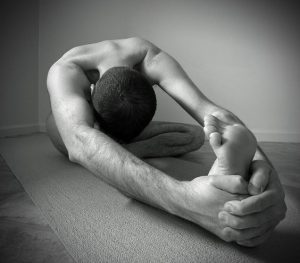 Struggling to sleep? Finding yourself up at 3 a.m. almost every morning? Thoughts trailing on for hours? I might have the perfect cure so that you can finally have the good night’s sleep you’ve been dreaming about. (See what I did there?)
Struggling to sleep? Finding yourself up at 3 a.m. almost every morning? Thoughts trailing on for hours? I might have the perfect cure so that you can finally have the good night’s sleep you’ve been dreaming about. (See what I did there?)
Let me first explain to you what insomnia is.
Insomnia is merely (short to say to the average Joe) a lack of sleep caused by various factors.
This condition can be caused by psychiatric/medical conditions, unhealthy sleep habits, substance abuse, and/or biological factors. In the past few years, researchers have begun to think about insomnia as brain problem being that it is unable to stop being awake (your brain has a sleep cycle and a wake cycle—when one is turned on the other is turned off—insomnia can be a problem with either part of this cycle: too much wake drive or too little sleep drive). Before we get into how Yoga can fix this problem, lets first figure out why you may have insomnia.
Food:
Not only do we LOVE food, but little do we know this can have an effect on your sleeping patterns and ability to fall asleep.
- So if you’re a drinker, this could be the reason why you can’t sleep. Reason being that alcohol is a sedative (so you’d think that this would help you sleep?), this can’t make you tired, but will disrupt your sleep later on in the night. This may not be the case as some people tend to sleep like a rock after an odd knock. But if you’re a trained drinker (on the daily) this might be something to look into.
- RNM helvetica, sans-serif;”>Caffeine should 100%, definitely be a no before bed. Caffeine is a stimulant (in other words gives you energy to stay awake. If you drink A LOT of coffee a day (like more than 4 cups), here’s your problem.
- Nicotine is also a stimulant and can cause insomnia. Smoking close to bedtime can cause insomnia, or contribute to an interrupted sleep.
- Heavy meals close to bedtime can and will disrupt your sleep. Rule of thumb is that you should eat lighter meals at night and no carbs after 4 in the evening. When you eat too much in the evening makes it hard for your body to settle. Spicy foods can also cause heartburn and interfere with your sleep.
Lifestyle:
Insomnia can be triggered by your behaviours and sleep patterns. Unhealthy lifestyles and sleep habits can create insomnia on their own (without any other underlying psychiatric or medical problem), or they can make insomnia caused by another problem worse.
Examples of how specific lifestyles and sleep habits can lead to insomnia are:
- Working from home at night. When your home should be your relaxing place after a long day at work, you’re creating an environment which is telling your brain to stay active and alert; you’ll also go to bed thinking about work, which will cause an interrupted sleep.
- You sometimes sleep in later to make up for lost sleep. This can confuse your body’s clock and make it difficult to fall asleep again the following night.
- If you work irregular hours. Non-traditional hours can confuse your mind and body’s clock, especially if you are trying to sleep during the day, or if your schedule changes periodically.
- Once this happens, worry and thoughts such as, “I’ll never sleep,” become associated with bedtime, and every time the person can’t sleep, it reinforces the pattern.
This is why it’s important to address insomnia instead of letting it become normal part of your life. If your insomnia is caused by an unhealthy lifestyle and bad sleeping habits and if you have tried to change your sleep behaviours and it hasn’t worked, it’s important to take this seriously and talk to a doctor.
Depression and anxiety:
Psychological struggles can make it hard to sleep, as insomnia can bring on changes in mood, and shifts in hormones and physiology can lead to both psychiatric issues and insomnia at the same time.
- Sleep problems may be indicated as a symptom of depression. Studies show that insomnia can also trigger or worsen depression.
- Most adults have trouble sleeping, due to nervousness, but for some it’s a pattern that interferes with sleep on a regular basis.
- Anxiety patterns such as: Tension, overthinking, excessive worrying, and feeling overwhelmed, are huge contributors to insomnia.
Finally! Let’s talk about my Yoga secret.
Now that you understand what could be causing your insomnia, you may have a slight idea on how to better your sleeps at night, along with my Yoga routine.
Implement these poses into your pre-bedtime routine to beat your sleepless nights, so that you can finally have well-rested, productive days.
-
 Standing forward bend
Standing forward bend
As explained by the name itself, all this pose entails is for you bend forward from a standing position.
- You can have your legs together or shoulder width apart, but make sure you bend forward from the hips with a straight back.
This pose stretches out those hammies, which tend to tighten as the day progresses. This pose is also effective when it comes to calming and soothing your mind.
- Head to knee forward bend
- Start by sitting upright with your legs straight out in
 front of you.
front of you. - Bend your right leg in so that your right foot touches the inside of your left leg.
- Bend forward from your hips as far as you can go, grabbing around your left foot if possible.
- Drop your head to touch your knee if you’re flexible enough, otherwise just go down as far as possible.
- If you can’t reach your toes, place your hands on the floor on either side of your left leg.
- Hold for a few second and then switch legs.
This will release tension and stretch out each of your legs, ultimately allowing you to relax.
- Downward facing dog
 One of the most practiced poses; downward dog is not only calming, but its rejuvenating as well.
One of the most practiced poses; downward dog is not only calming, but its rejuvenating as well.
- Start on your hands and knees, with your toes curled under.
- Straighten your arms whilst relaxing your back, and lift your knees off the floor.
- Your legs can be straight or have a bend slightly, sinking your heels towards the floor.
- Press into the ground with your fingers spread, and lift your pelvis, bringing your shoulder blades into your upper back.
- Draw your chest towards your thighs, lift your sit bone high, and relax your head without letting it go loose.
- Bridge pose
 For bridge pose, begin lying on your back with your knees bent hip-width apart, and arms out beside your body.
For bridge pose, begin lying on your back with your knees bent hip-width apart, and arms out beside your body.- Raise your hips and pelvis whilst engaging your legs, and roll your spine off the floor.
- Lift up your chest by pushing your arms and shoulders into the floor.
- Bring your hands together and clasp them underneath your body.
This restorative pose will help you relax while strengthening your legs and core at the same time.
- Cat pose
 The Cat pose is so simple, yet provides such great, soothing results.
The Cat pose is so simple, yet provides such great, soothing results.
- Begin on your hands and knees. You can curl your toes or keep the tops of your feet flat on the ground.
- Round your spine and engage your abs, pulling your belly button in towards your spine.
- Press down into the floor with your hands and relax your head.
This pose feels so good and aims to alleviate stress and anxiety. It also massages the spine and belly organs.
I hope this is enough to get your eyes shut and your energy levels up the next day!
Yours Truly
C.
Nice post and very useful information!Thank you for sharing.